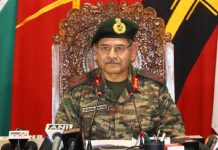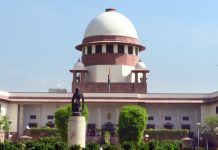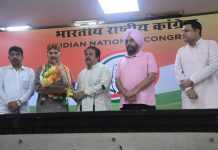Intro: The CM-designate’s conciliatory tone towards the BJP reflects the significant challenges facing the about-to-be-installed NC-Congress government in the UT, writes Riyaz Wani
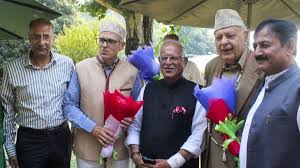
Soon after the National Conference (NC) secured 42 seats in the just concluded Assembly election in Jammu and Kashmir, its leader, Omar Abdullah struck a pragmatic tone. Instead of the emphasis on the restoration of Article 370, which was one of the main features of the NC’s election campaign, he prioritized the return of statehood to J&K. And to this end, instead of advocating the passage of resolution against the revocation of Article 370 on October 5, 2019, he expressed the intention to pass a resolution for the reinstatement of statehood.
“Our political position won’t change. As and when the government is formed, the Cabinet should pass a resolution and the CM should then travel to Delhi and call on the prime minister, home minister and senior leadership to press for the restoration of statehood,” said Abdullah.
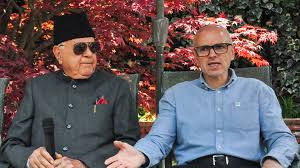
He also talked about his intention to work for a cooperative relationship with the BJP-ruled New Delhi and its Lieutenant Governor in the union territory, Manoj Sinha, to ensure good governance in the erstwhile state.
Omar’s conciliatory tone towards the BJP reflected the NC-Congress alliance’s formidable challenges in the union territory. He wouldn’t be just dealing with the BJP government at the centre and its powerful Lieutenant Governor in J&K but he would also be up against the BJP as a formidable regional opposition party with the second largest number of seats. The saffron party increased its tally in the Jammu division from the 25 seats in 2014 to 29 now, making it the majority party from the Hindu-dominated region.
This makes the NC-Congress coalition amenable to accusations of leaving out Jammu region from any credible representation in the new elected government. Already such voices have reared their head in Jammu. Social media in Jammu is abuzz with the people from the region expressing resentment at being left out of the government, even after consolidating in favour of the BJP.
However, people in Kashmir don’t think it is a legitimate concern in a union territory setting.
“The new elected government is one of the weakest in the country while the real authority is vested in the LG who represents the BJP government at the centre,” said Naseer Ahmad, author of Kashmir Pending, a book on Kashmir. “So, the BJP effectively remains in charge of the UT, while the elected government will wield little control over governance, making it difficult for the NC-Congress coalition to hold its ground, let alone take steps to fulfill its promises.”
In Kashmir Valley, on the other hand, there will be enormous pressure on Omar to make the restoration of statehood a central issue of his government, as the people would want him to assert himself and deliver on his promises. But will the centre relent? That remains to be seen. Although both the Prime Minister, Narendra Modi, and the Union Home Minister, Amit Shah, time and again promised the return of statehood during their election campaign in the union territory, they aren’t expected to make the concession to a UT government other than their own.
This is likely to compound the problems of the NC-Congress government which would have to run for approval for any of their move or decision to the LG, just like the situation has been in New Delhi, creating mutual antagonism.
If anything, the outcome of the Assembly election wasn’t along predictable lines, more so, in the Valley, where a crowded electoral scene threatened to split the mandate, but ultimately didn’t. At one point in the election, the Awami Ittehad party (AIP) seemed set to replicate its parliamentary party performance where its jailed leader, Engineer Rashid won by a whopping 4,52,812 votes – two-thirds of the total – defeating political heavyweights such as former Jammu and Kashmir chief Omar Abdullah and Sajad Lone. This gave AIP a majority across almost 12 of the 15 Assembly segments in North Kashmir. But this time, the party could barely win one seat, that too despite Rashid being released from Tihar to campaign for his party.
The banned separatist outfit Jamaat-i-Islami met the same fate with not even one of the independent candidates fielded by the party managing to win. Similarly, the parties like Altaf Bukhari’s Apni Party and Ghulam Nabi Azad’s DPAP, both formed in the past five years, failed to win a single seat, while the People’s Conference (PC) led by Sajad Lone could only secure his own seat.
The PDP, once a major rival to the NC in the Valley, secured just three seats, a drastic fall from the 28 seats it won in the last Assembly election in 2014. The PDP, as per the general opinion in the Valley, suffered for running a coalition government with the BJP from 2015 to 2018. So much so that the PDP is also blamed, in part, for the BJP-led central government’s decision to revoke Article 370 in 2019. Also, unlike the NC, the PDP in recent years also faced exits of most of its senior leaders who boasted their respective support bases.
Going forward, the new government will need to perform a tight balancing act to survive. With the BJP controlling the Union government and the LG wielding considerable authority in the Union Territory, the NC-Congress coalition will have a tough time asserting its power, if any. The coalition has 49 seats between them which make for a secure majority. The BJP which was hoping to form a government by roping in the smaller parties and the independents from Kashmir Valley doesn’t have many options. And for now, the party could settle for a role in the opposition but it would be there to make the most of every opportunity to highlight the failure of the NC-Congress coalition.








